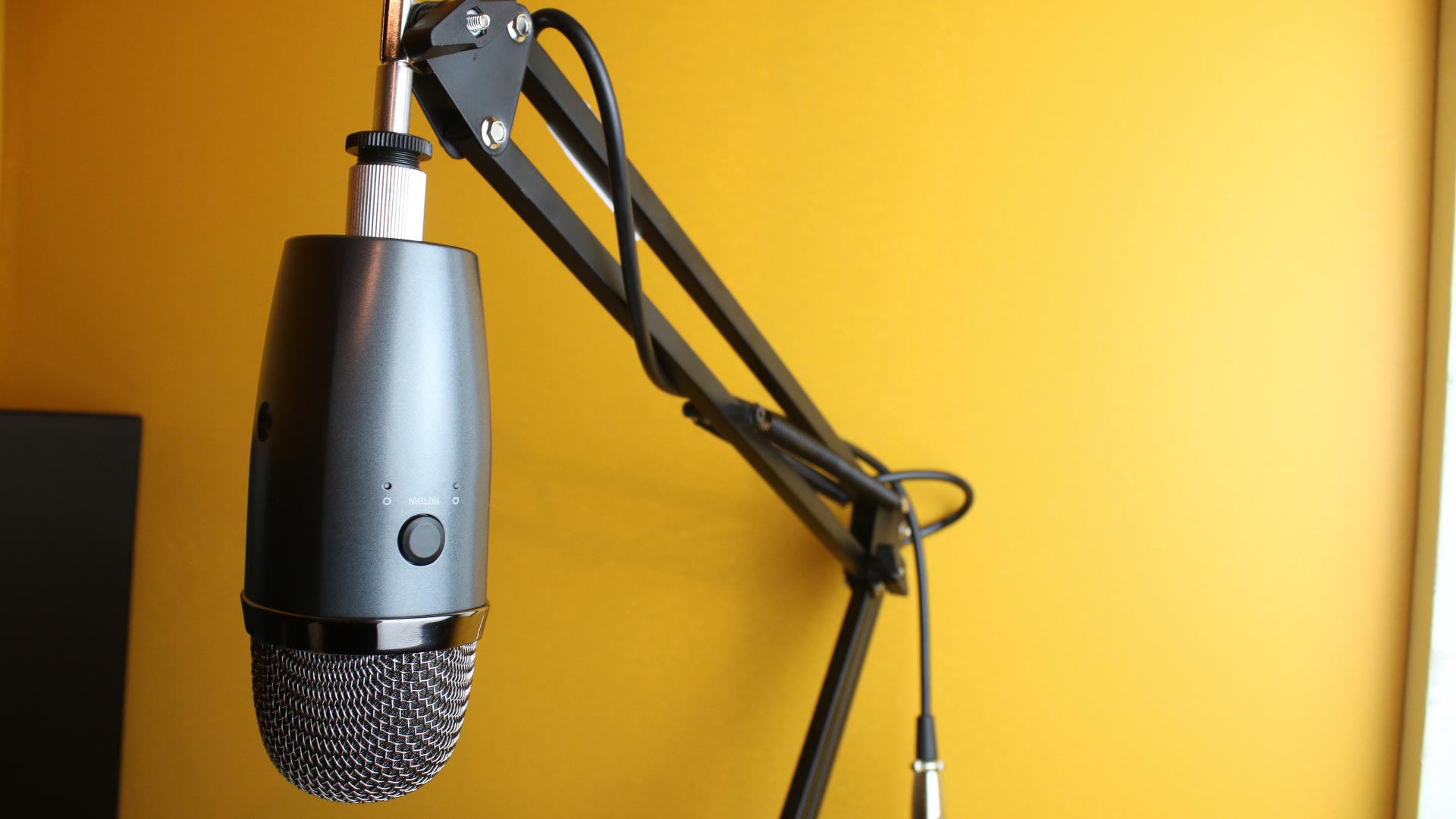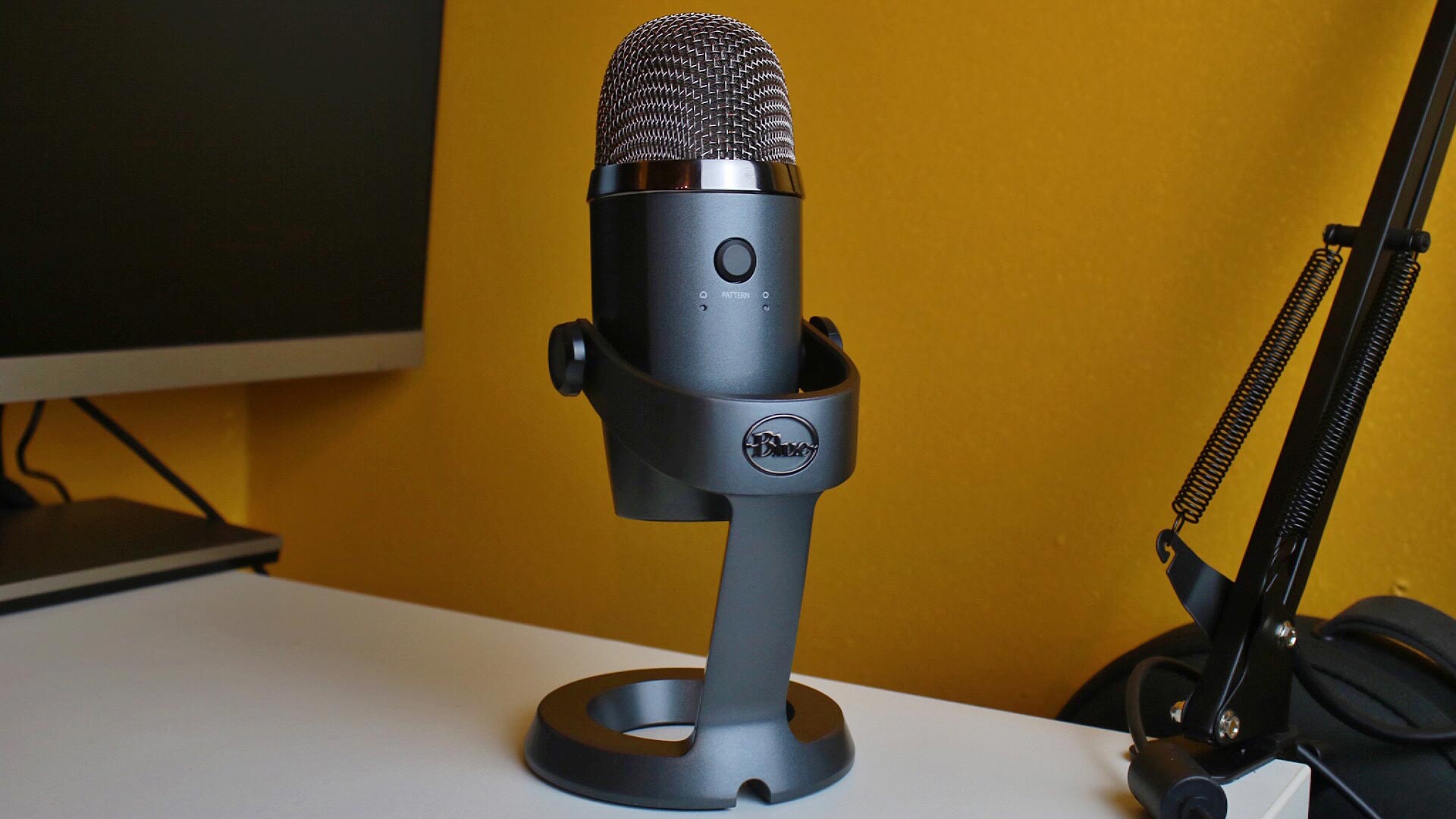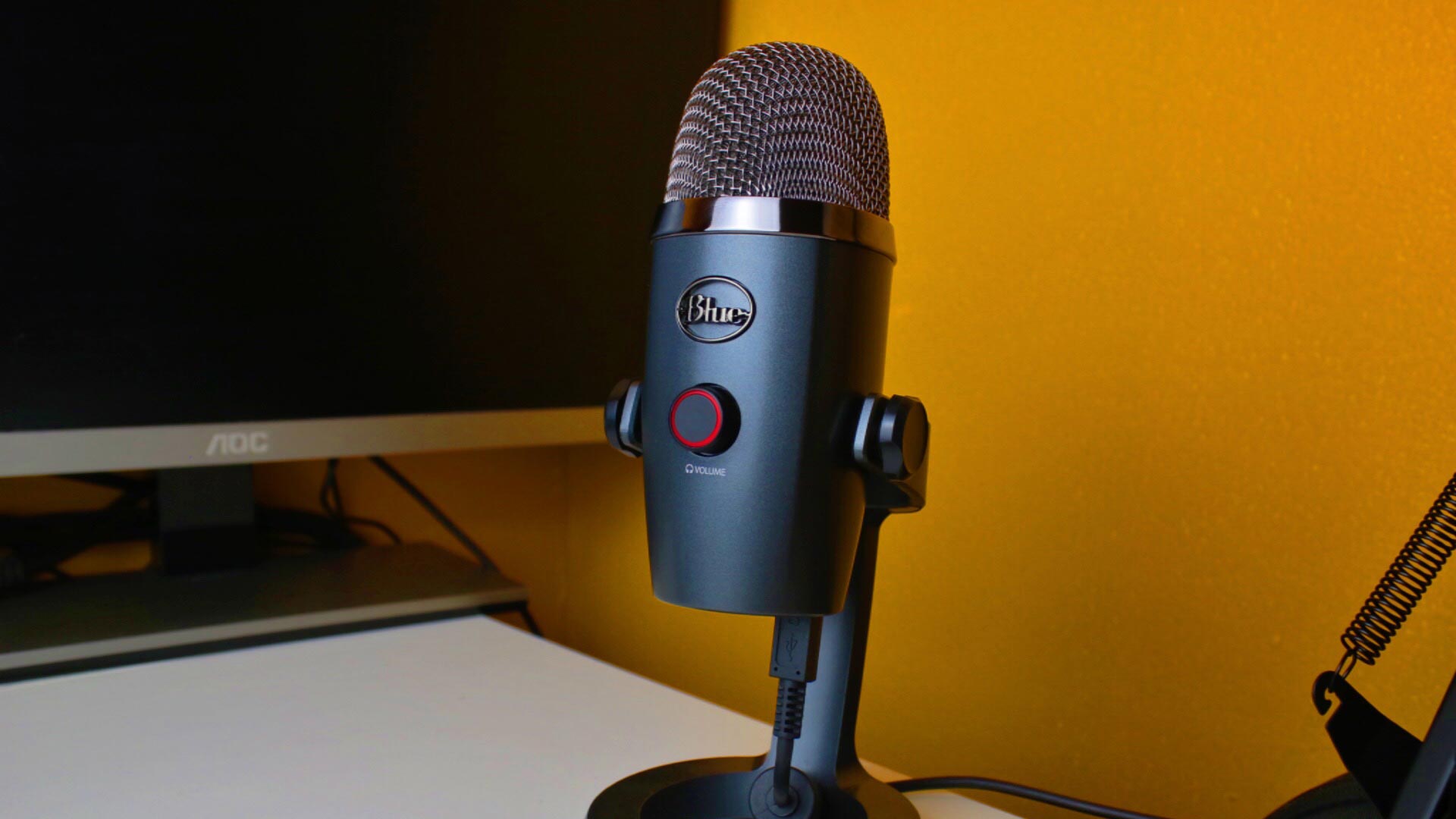Laptop Mag Verdict
The Blue Yeti Nano combines excellent sound quality and easy setup with a lightweight, premium design.
Pros
- +
Excellent broadcast sound quality
- +
2 Different Polar Patterns to choose from
- +
Easy setup, Solid Build Quality
- +
Professional look and feel
- +
Headphone jack with low latency monitoring
Cons
- -
No pop filter or windscreen
- -
Gain is only adjustable via Sherpa software
Why you can trust Laptop Mag
If Tony Stark designed USB mics in his spare time for the weekly Avengers podcast and streaming sessions, the $99 Blue Yeti Nano would be the microphone he would’ve come up with. It’s the dynamic little powerhouse brother of the much larger and stately Blue Yeti Blackout and Blue Yeti Pro. The Yeti Nano is plug and play for both Mac and PC and is easier to get going and hooked up than Brad Pitt on Tinder.
Blue Yeti Nano design
Made from the same aluminum metal alloy as its larger brothers, the Blue Yeti Nano is solidly built and has a nice weight to it with touches of unique styling throughout. You’ll find the stylish black-chrome Blue logo on the upper front of the mic. The detachable aluminum stand is nicely weighted and painted shadow gray to match the mic. The stand is bold, yet subtle, and has a unique design and stance. When the mic is in its stand you can easily adjust its angle via two knobs on either side of the mic.
The Yeti Nano is not fully cylindrical like it’s brethren and has a more aerodynamic, rounded rectangle shape that looks like it was meant for traveling at high velocities. Our gray test mic has some stylish flecks in the paint, giving it sparkle and pizzaz. It also comes in Red Onyx, Cubano Gold, (they should honestly mix the two so it would look like Iron Man's armor!) and Vivid Blue. They all look fantastic and enhance its on-the-go podcasting and streaming appeal. These mics look amazing on camera and if you pull one out to interview someone, they’ll be impressed.
On the front of the mic, you'll find a nice black multi use knob that controls volume and, with a push, lets you mute the mic. There is a ring light set within the knob that will light green when in use or red when muted; It’s beautifully implemented within the knob and works without a hitch.
On the backside, there’s the pattern button, which has two small lights on either side to indicate which pickup pattern -- cardioid or omnidirectional -- you’ve selected. Along the bottom, you will find a microUSB plug and 3.5mm low-latency headphone jack as well as standard threading for an optional Radius III shock mount or to connect to a boom arm, which is how I have it set up currently . The Yeti Nano is beautifully engineered and you can tell that every detail was thoughtfully designed and manufactured with excellence in mind. The sound quality from the low latency 3.5mm headphone jack should also be mentioned as it is excellent as well.
Blue Yeti Nano microphone quality
As with the other Blue Yeti microphones, setup is a breeze and it’s ready to go as soon as you plug it in. However, you will need to download Blue Yeti Sherpa software to control the gain level for the Nano. But the level straight out the box is more than satisfactory to immediately start recording.
Inside the classic design of the mic cap are two cardioid mic capsules that are tuned and optimized to produce fantastic recording results. With the ability to record at high-quality 24-bit/48kHz (higher than the Yeti, Yeti Studio and Yeti Blackout), the Yeti Nano brings high production value to your streaming, podcasting and other recordings.
Sign up to receive The Snapshot, a free special dispatch from Laptop Mag, in your inbox.
Even though the Blue Yeti Nano has only two (omnidirectional and cardioid) recording patterns compared with the Blue Yeti Blackout and Pro which have four (cardioid, bidirectional, stereo, omnidirectional at), I found myself really loving the quality of the recordings I made in both patterns and didn’t find any loss in sound quality with just the two. The 24-bit/48kHz really stand out in regards to how rich every recording was and I never felt the Nano was lacking in performance or missing anything without the additional recording patterns. Every recording was loud and clear, and when I used it to make a Skype call, the person on the other end found the audio “wonderful [and]warm” and thought the Yeti Nano was visually pleasing.

When I recorded myself for a voiceover in a cardioid pattern, the timbre of my voice was perfection. The Blue Yeti Nano really captured the depth and warmth of my voice and I found the recording on par with its larger brothers and superior to other microphones, such as the more expensive Razer Seiren Elite and Razer Seiren Emote, which record at 16-bit/48Hz.
The omnidirectional pattern proved just as good when I conducted aa test interview with my significant. The recording was excellent and I can truly see myself traveling with the Blue Yeti Nano and holding impromptu podcasts or interviews. Why? Because the Yeti Nano is sturdy, compact, records such high-quality audio, and is a fantastic portable studio option compared to others. My one serious complaint is the lack of a windscreen or pop filter, which you can purchase cheaply on Amazon for around $10. I hope in the future that Blue starts supplying their own.
Bottom line
Hands down, the Blue Yeti Nano is my favorite USB mic. The $99 mic records in high quality 24-bit/48Hz, producing beautifully clear, crisp, and warm audio. Throw in the fantastic build quality, sexy engineering and visual appeal, and Blue has a winner on its hands.
If you're someone who is looking to take their podcast, streaming or personal recording to the next level, I highly recommend the Blue Yet Nano to you especially if you’re looking for high quality at a reasonable price. Its combination of design quality, recording quality, portability, and price are unmatched and why it’s the first USB mic I have reviewed to earn a 5-star rating.

Mark has spent 20 years headlining comedy shows around the country and made appearances on ABC, MTV, Comedy Central, Howard Stern, Food Network, and Sirius XM Radio. He has written about every topic imaginable, from dating, family, politics, social issues, and tech. He wrote his first tech articles for the now-defunct Dads On Tech 10 years ago, and his passion for combining humor and tech has grown under the tutelage of the Laptop Mag team. His penchant for tearing things down and rebuilding them did not make Mark popular at home, however, when he got his hands on the legendary Commodore 64, his passion for all things tech deepened. These days, when he is not filming, editing footage, tinkering with cameras and laptops, or on stage, he can be found at his desk snacking, writing about everything tech, new jokes, or scripts he dreams of filming.




